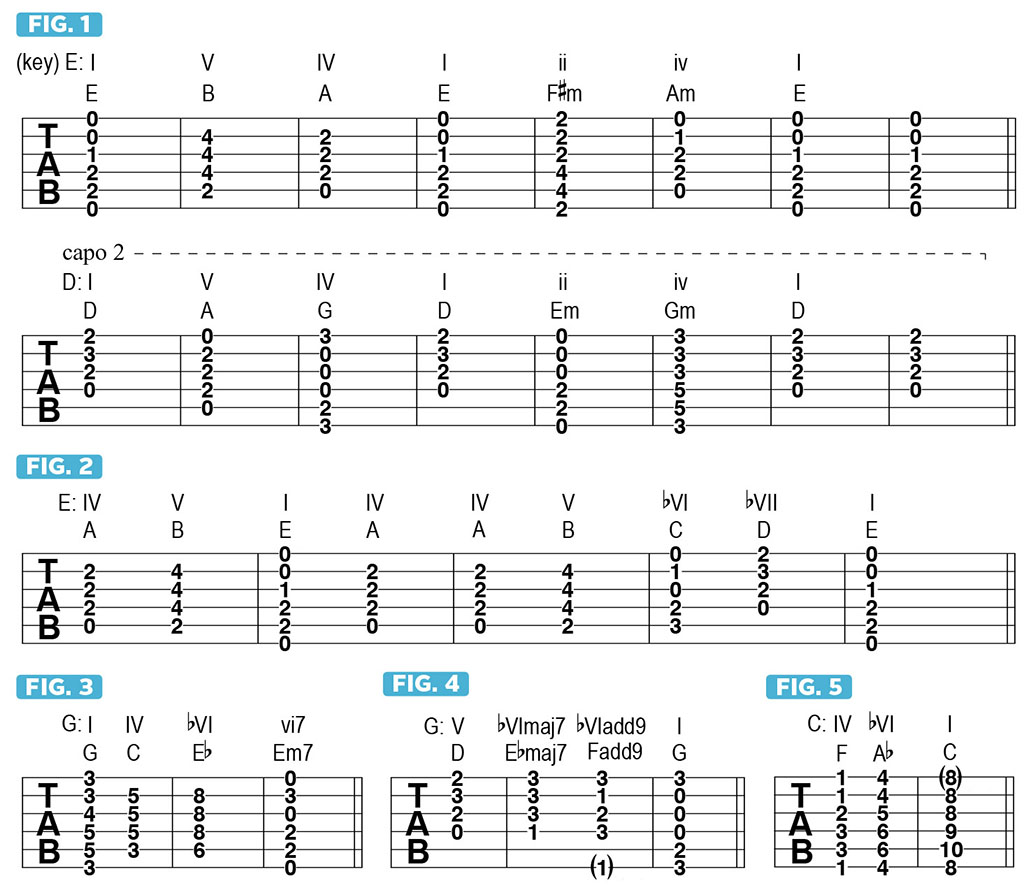Shake up your songwriting by borrowing chords from a parallel minor key
With examples of the technique employed in famous songs across different genres

Continuing our look at interesting, effective ways in which songwriters have borrowed a chord from a major key’s parallel minor, such as the often-used “IV - iv - I” (four major, to four minor, to one major) move we looked at last time, I’d now like to reference additional examples of this practice from a few well known songs that beautifully illustrate some less common but equally appealing chord-borrowing options and variations.
At the end of each verse in Nowhere Man by the Beatles, which is in the key of E major, guitarist and songwriter John Lennon moves to the four minor (iv) chord, Am, before going back to the one (I), E.
But instead of approaching the four minor from the four major (IV), A, Lennon opted to substitute the darker two minor (ii) chord, F#m, an inventive move that prolongs and deepens the momentary sadness of the four minor, by approaching it from another minor chord.
FIGURE 1 illustrates the basic move in the key of E, and also in D, capo 2, which transposes the second line of voicings up a whole step to the concert key of E and reflects what Lennon and co-guitarist George Harrison did together in their band arrangement.

Another cool and interesting option for borrowing a chord from a major key’s parallel minor is to substitute the four minor chord’s relative major, which would be the flat-six major chord - bVI.
Two good, famous examples of this simple and effective move, both in the key of E, can be found in the intro/verse/chorus progression to Blow Up the Outside World by Soundgarden, which eerily toggles back and forth between the chords E and C, and in the chorus to Ozzy Osbourne’s Mama I’m Coming Home, which goes from the four (IV) chord, A, to B, the five (V), then, surprisingly, on the word “home,” to the flat-six (bVI), C, followed by D, which is the flat seven major ( bVII), before finally resolving to the one (I), E.
Note that all instruments on the studio recording of the song, including Zakk Wylde’s guitars, are tuned down a half step, so everything sounds a half step lower. FIGURE 2 illustrates a similar movement with basic open chords.
More Than a Feeling by Boston features a similar move with an original creative twist, specifically near the end of the song’s chorus, first heard at 1:08, on the lyric “’til I see Marianne walk away.” Here, guitarist and composer Tom Scholz, playing in the key of G, goes from one to four major (I - IV), G to C, then up to the flat-six major chord (bVI), Eb, instead of the expected diatonic six minor (vi), Em, as he had done previously.
As in FIGURE 3, the crafty guitarist and composer then moves to Em7, nicely setting up a return to the verse key of D major, via a two (minor)- five-four-one progression (ii - V - IV - I), Em7 - A7 - G - D.
Billy Joel, at the end of each verse in his tender, piano-driven ballad She’s Got a Way, at 0:33, employed a similar V - bVI - bVII - I progression, here in the key of G, moving from the five (V) chord, D, to Ebmaj7, then Fadd9, then G, making good use of the G common tone among the last three chords.
And that other great pop pianist and songwriter, Elton John, threw in a surprise bVI chord during the chorus to his '70s hit, Daniel, which is in the key of C, moving, at 1:45 from the IV chord, F, up to Ab, then to the tonic, C. FIGURES 4 and 5 outline these simple yet stirring changes.
Next time, we’ll look at another cool twist on borrowed harmony, from some familiar and inspiring sources.
Senior Music Editor “Downtown” Jimmy Brown is an experienced, working musician, performer and private teacher in the greater NYC area whose personal and professional mission is to entertain, enlighten and inspire people with his guitar playing.
Get The Pick Newsletter
All the latest guitar news, interviews, lessons, reviews, deals and more, direct to your inbox!
Over the past 30 years, Jimmy Brown has built a reputation as one of the world's finest music educators, through his work as a transcriber and Senior Music Editor for Guitar World magazine and Lessons Editor for its sister publication, Guitar Player. In addition to these roles, Jimmy is also a busy working musician, performing regularly in the greater New York City area. Jimmy earned a Bachelor of Music degree in Jazz Studies and Performance and Music Management from William Paterson University in 1989. He is also an experienced private guitar teacher and an accomplished writer.











